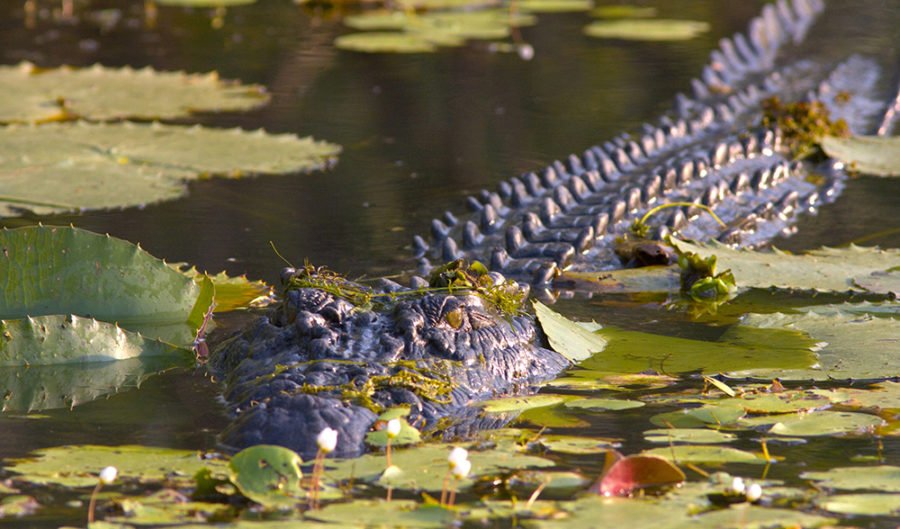Climate change to affect crocodile population size, scientists say

Young estaurine crocodiles, in a bid to survive into adulthood and avoid being consumed by their older, much larger relatives, dive underwater and hide for long periods of time.
While this survival tactic plays out the crocodile will drop its heart rate and redirect blood to essential organs like the brain. This can last for up to half an hour if the croc is particularly threatenedHowever, in a paper published this week in the Journal of Experimental Biology, scientists from the University of Queensland say that crocs will remain underwater for much shorter periods if temperatures are too high.
Essie Rodgers, co-author of the paper explained that this could mean that the iconic Australian predator may not be as resilient to climate warming as was previously thought.
“It can be hypothesised that juveniles will need to spend more time at the water surface and be more conspicuous to predators. Increased exposure to predators may see fewer juveniles surviving to be added to the population,” she said.
By observing the physiological mechanisms, such as oxygen levels and heart rate, affecting a crocodiles dive at high water temperatures the team of researchers found that crocodiles were submerged for half as long at 34°C compared to 28°C.
“Even the crocodiles left to adjust to 34°C before the dive trials were unable to remain submerged for long,” Essie said. “We now understand that shorter dives at elevated temperatures are underscored by increased oxygen demands. This means that crocodiles churn through their limited body oxygen stores faster and therefore need to surface sooner.”
Crocodile populations today
However, Charlie Manolis— a crocodile expert from the Northern Territory, independent from the study— told Australian Geographic that hatchling mortality in saltwater crocodiles is relatively high, as it is for most crocodilian species.
“As the authors point out, the potential impact of higher water temperatures on diving times “could” threaten survival rates,” he said. “Only through monitoring of wild populations will we know whether there is an effect of warmer temperatures on hatchling survival rates in the future.”
Essie added that while crocodile populations are stable and growing, continuous monitoring is recommended, particularly as water temperatures continue to rise in freshwater and marine habitats.
“Limiting the extent of climate warming is the best way forward and this can be achieved by curbing carbon dioxide emissions,” she said.

